By Andrew Lau
The CEO of Think Codex takes this opportunity to share his views and how Think Codex came about. Here, he addresses the issue of why learning solutions are not sustainable, and which are within our control
Why are Learning Solutions not sustainable?
Organisations spend a huge amount of money on training and development but still we are seeing people complaining about how they do not see the relevance of it to their work or that they fail to bring the knowledge back into their workplace.
This had me thinking about how to make learning more efficient, and the best person to start with, was myself.
I began to recall the moments where I had failed to bring the key lessons of the trainings I had been to back into my workplace, and dissecting them into distinct elements. I figured that while there are a number of external factors which are outside an L&D Professional’s control, like organisational culture and structure, there are still some factors within our influence:
1. Recall – Can a person remember what they have learnt?
The typical training method of teaching through slides and written material has been in existence since 600B.C - the time of the ancient Greeks.
While the tools may have changed from Papyrus to Powerpoint, the method remains. More importantly however, research has found this method to have the lowest recall rate.
This means we need to seek out newer proven methodologies such as prototyping and simulations. By changing the methodology, we can shift retention rate from 10% to as high as 90% - a staggering multiplier of nine.
This is because when we prototype in a realistic environment, we can customise the knowledge/solution in accordance to our own style and personality. I've found that this creates a sense of ownership, helping us recall things better as we feel that we have created that realization with our own effort.
That said, people have thrown questions at me saying "how can we direct what a person learns if he/she were to direct his/her own learning. We cannot ensure that they learn the desired material".
O ye of little faith. Let me address this in the next section, have some confidence.
2. Confidence – Is the person willing to try out the learning(s) at work?
Why is a person reluctant to try out what they’ve have learnt in trainings?
At the heart of it, it boils down to this dialogue within their heads – “This looks good, but will it work for me? Will I be able to do it?” The only way to ease such fears is for a person to be able to try out the concepts and theories in a safe environment.
Such an environment must provide business-like reality to mirror the complexity and challenges in the working world. Games and activities that promote luck will not be able to allay the fears of a person. In short, the learning environment must bring participants into a mental and emotional state of real business.
So fear not doubters, simulations can be designed to a person towards the key learnings by incorporating the raw concept of it directly into design, with the environment built around it.
Think of a maze, there are many twists and turns, and the participants are free to take their personalised actions towards achieving them. However, a simulation also has rules, a series of check and balances to ensure that the participants do not stray away, tethering them to an area where the learnings are key. This not only helps them with recall, but also amplifies the feeling of empowerment with regards to their actions.
3. Simplicity – Is the learning & tools hindering implementation?
During my years in an oil and gas company, I once attended a highly-regarded decision making workshop. The content from the vendor was solid, but their process of decision-making took about 2 days to complete. In a normal operational environment this would be near impossible to actually execute.
At other times, I was confronted with tools so complex that it was just not possible to understand without an instructor’s help. Needless to say, I didn’t apply any of the tools.
Methodology and tools should be simple and take no more than 15 minutes to learn. This is so that a person can teach colleagues the tool, and still have 45 minutes to apply the tools in a typical 1-hour business meeting. Tools that are simple will reduce the barrier of entry into the workplace.
This is the direction where I aspire to bring Think Codex to - a simulation design company that focuses on making learning sustainable. If we are to innovate the L&D in our organizations, it does not require sophisticated digital products but can begin with 3 simple core principles in the form of Recall, Confidence and Simplicity.



